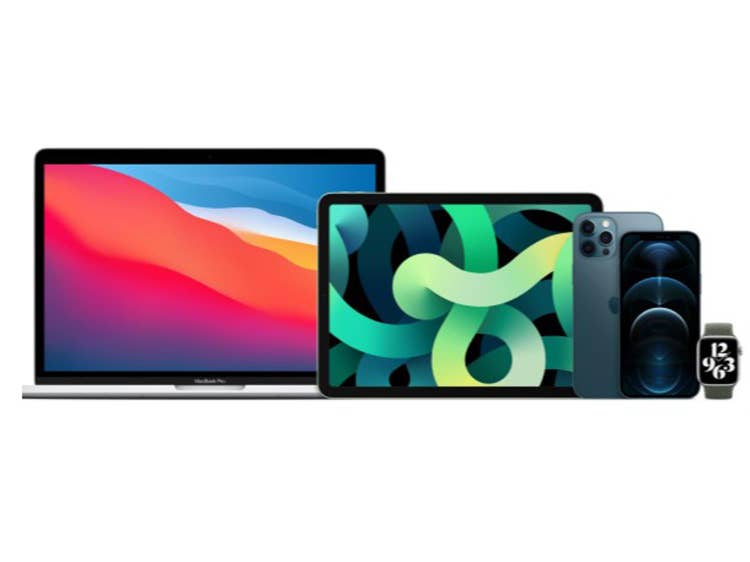Despite CPU Shortages, Apple’s Growth Streak In All Product Categories Continues
‘Apple is a growth engine for us,’ says one solution provider executive, who reports seeing higher demand from businesses for Apple’s Mac, iPhone and iPad product lines.

At solution provider powerhouse Stratix, Apple products from the iPhone to the iPad to the Mac have all been finding higher interest recently among business customers—ultimately driving growth in demand for the company’s suite of Apple-related services.
The Apple reseller and authorized service provider offers what it calls its SmartMobile Services for Apple, which cover everything from planning, proof-of-concept testing and deployment of Apple devices to support of the devices after deployment, said Tony Glinski, director of Apple business at Peachtree Corners, Ga.-based Stratix.
“Apple is really propelling us forward as a mobile managed services company,” Glinski said in an interview with CRN. “Apple is a growth engine for us—no doubt.”
[Related: Apple CEO Cook: Surge In Mac Demand ‘Fueled’ By M1 Chip]
The demand for Apple products that Stratix has been seeing is reflected in Apple’s financial results for its last several quarters, which have included significant year-over-year growth for Apple across all of its product categories.
For instance, the past four quarters have been the “best four quarters ever” for the Mac business, Apple CFO Luca Maestri said Tuesday during the company’s quarterly call with analysts. In November, Apple introduced its high-performance M1 chip, which now powers versions of the MacBook Pro, MacBook Air, Mac Mini, iMac and iPad Pro.
Mac revenue jumped 21 percent year-over-year during Apple’s fiscal first quarter, ended Dec. 26—before surging 70 percent during the company’s fiscal second quarter, ended March 27. The Mac business then grew 16 percent during the company’s fiscal Q3, ended June 26.
“The response to the M1 has been unbelievable,” Apple CEO Tim Cook said during the quarterly call on Tuesday.
The results have been similar for Apple’s iPhone business during the past three quarters (growth of 17 percent, 65 percent and 50 percent, respectively), as well as for the iPad business (growth of 41 percent, 79 percent and 12 percent). Apple’s services and wearables segments have also enjoyed a sharp uptick in revenue in recent quarters.
All of this growth has come in spite of industry-wide shortages of processors and other components, which have constrained the results, Apple executives have said. The supply constraints are expected to worsen during the current quarter, company executives said Tuesday.
Still, the major growth across Apple’s product categories is a reversal from the situation the company had been in prior to the start of the pandemic—and the resulting surge in demand for devices that could support working and learning from home. It wasn’t long ago that the iPhone business was routinely flat or down in terms of the quarterly revenue results for Apple, with revenue growth often hard to come by for the iPad and Mac businesses as well.
Now, Apple’s growth—as seen in its latest quarterly results—has become almost “too good,” analyst Toni Sacconaghi of Bernstein Research wrote in a note to investors Wednesday.
For the third quarter in a row, Apple’s results “blew out consensus expectations,” Sacconaghi wrote, citing the company’s 36-percent revenue growth for its latest quarter.
“Ironically, Apple’s growth in FY Q3 may have been too strong,” he wrote. “The company will be staring down very difficult comps in essentially every business in FY 22.”
There are plenty of reasons for optimism about the huge demand for Apple products continuing, however—particularly when it comes to the company’s Mac line.
The capabilities of the M1-powered Macs around performance, battery life and ability to run iOS apps—in addition to the attractive pricing of the M1 Macs—has been turning heads among business customers, Glinski said. And Apple is expected to launch new MacBook Pro models with an even faster version of its in-house, Arm-based processor later this year.
“You always have the employees that are going to be interested in the Mac, but that has absolutely broadened with the M1,” Glinski said.
That includes new demand for Macs from businesses that traditionally have relied mainly on PCs, he said.
“PCs have classically been thought of as the workhorses—‘they’re cheap and they get the job done,’” Glinski said. “But now, with the capabilities of the M1 combined with the really competitive price—you’d be crazy not to look at it.”